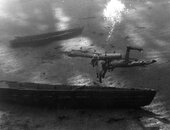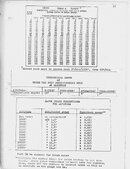We didn’t have that problem when there was only one regulator, with one second stage. If something happened to it, you simply surfaced.
SeaRat
While I agree with most of your post, this idea that "surfacing is simple" bothers me slightly.
Since my first course in 1975, I was taught that any problem should be solved staying down, not surfacing.
That is the very last resort, and if forced to surface, one had done several errors.
I also started diving with a single reg, and did this for at least 4 years.
Then, in 1979, while penetrating a narrow cavern for catching a lobster, I suffered a problem due to the valve closing while rattling against rocks.
I was suddenly OOA while still trapped inside the hole, with just my fins outside. Luckily my girlfriend perceived I was in trouble, pulled me outside the hole grabbing my fins, and provided air to me by sharing her single reg.
After reaching the deco stop at 6m (we were at 42m and with some deco obligation) I analysed what happened, understanding that the problem was the valve, opened it and we had all my air available for performing a correct deco.
If I was solo, the situation could have evolved quite badly, and "simply surfacing" could have been impossible or very dangerous.
After that accident I immediately purchased a second complete reg for me and my GF. Of course identical to our primary regs (SP MK5+109).
We are stll using those 4 regs!
All tanks here always had two valves, so not using the second valve revelead to be a stupid choice
And this also for buddy diving (I do not like solo).
So yes, both you and me survived using a single reg. Someone else did not survive, indeed.
And we all should agree that using a single reg, even if equipped with an octo, is not 100% safe: only two fully independent regs on two separate valves provide the redundancy required when diving deep, with deco, in caverns, or solo (which I do not like).

australiatravelquestions.com
 .
.






